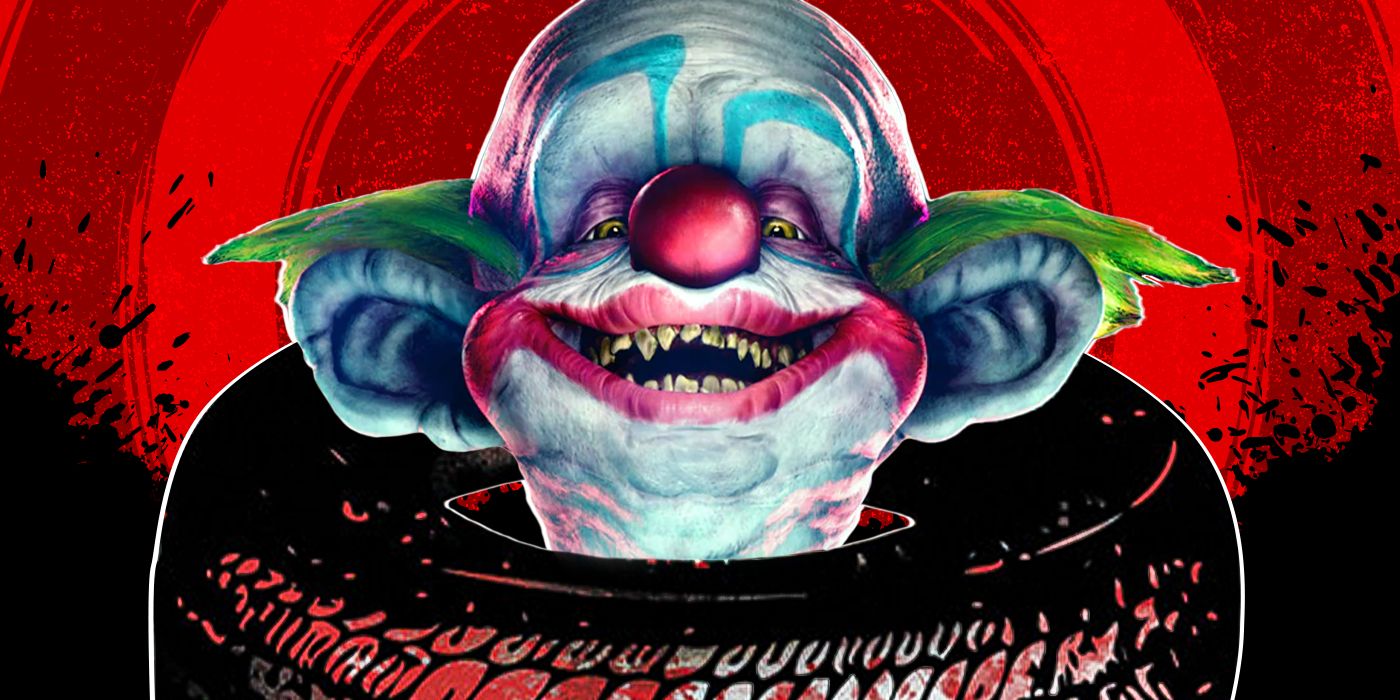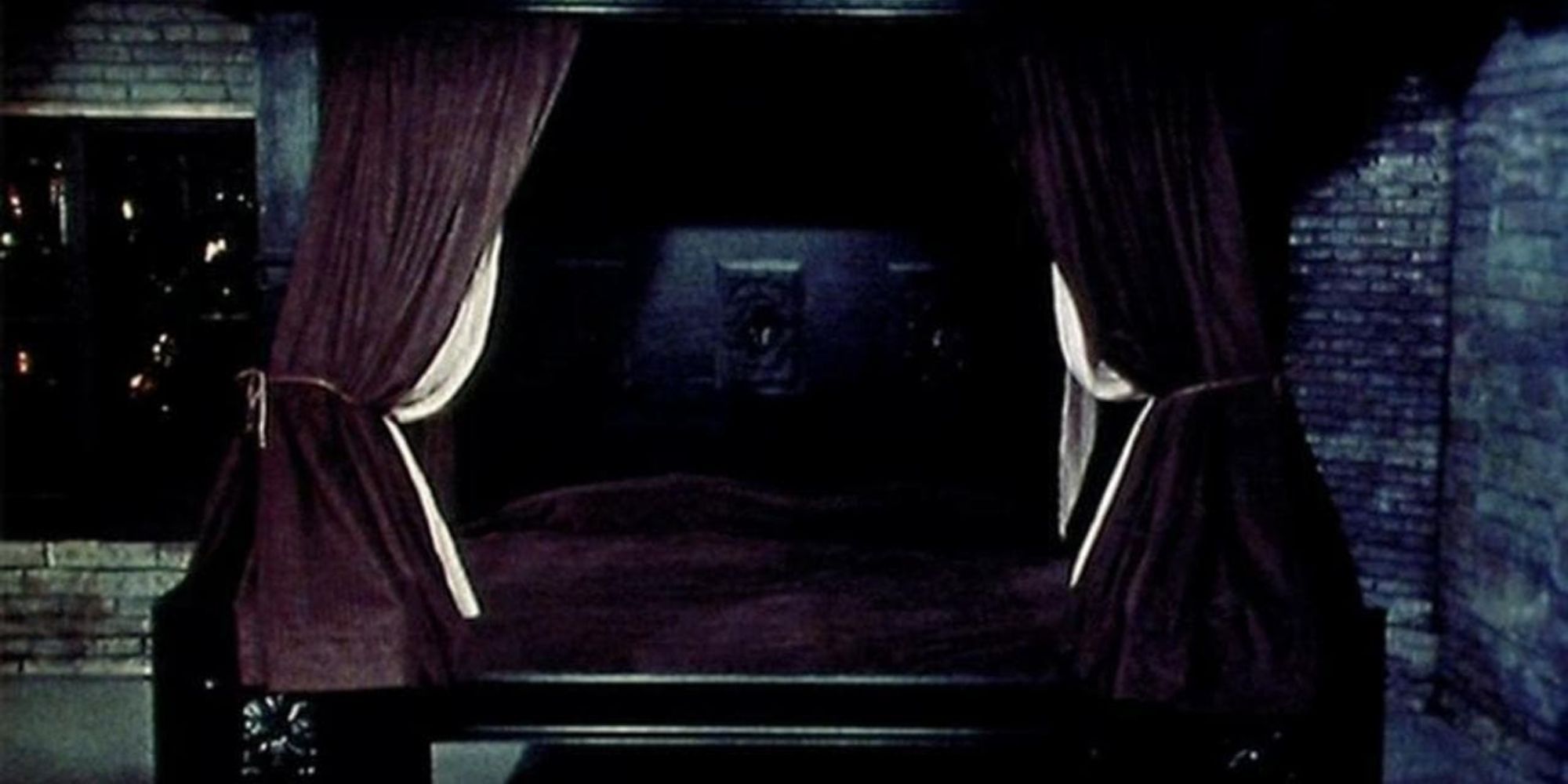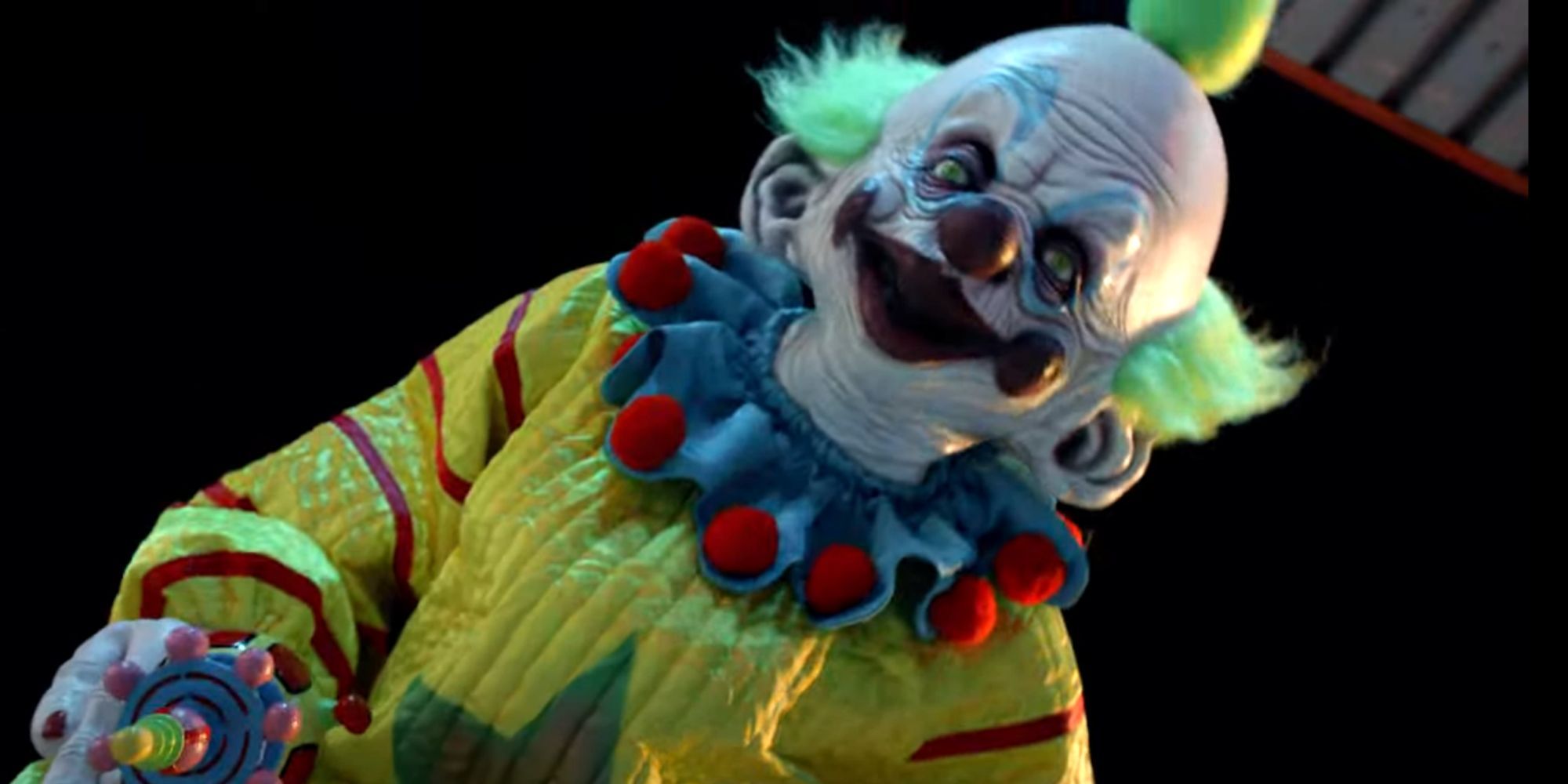No, you're not hallucinating. There really is a movie called Cocaine Bear set for release in early 2023. Directed by Elizabeth Banks and starring Ray Liotta (in his last big screen appearance) and Keri Russell, it's about a big, black carnivore that stumbles up on a cache of abandoned cocaine, ingests it all, and becomes an unstoppable killing machine. If Leonardo DiCaprio had come across this creature in The Revenant, well, suffice it to say, all that would have been left is some tattered clothing. As outlandish as this sardonic nail-biter seems, Cocaine Bear is almost certain to draw a sizable crowd. It wouldn't be the first time a horror thriller with a completely ridiculous concept looked to score big. In many cases, in fact, the more outrageous the story, the longer the lines at the box office. Certainly, there's a catharsis that comes with watching a scary movie, but that catharsis can be even more satisfying when the film is beyond outrageous.
The Exorcist is arguably one of the most terrifying horror films ever made. It's also one of the most successful, bringing in over $441 million at the box office. What drew audiences to this outrageous story of a young girl possessed by the devil? It wasn't your standard "things that go bump in the night" or "scary monster" story. It took a narrative that, on its face, was somewhat silly, but that had just enough plausibility to scare the bejeezus out of folks, making the experience akin to riding a roller at an amusement park. You're strapped in safely and you've got a sturdy bar coming down over your shoulders, so you know in your heart you're safe from harm. But there's still the tiniest possibility that something could go wrong as you soar 200 feet above the ground at speeds exceeding 100 miles per hour, and that's what makes you scream. Hollywood, seeing the phenomenal success of The Exorcist and never missing an opportunity to capitalize on a successful idea, began churning out horror films with crazy stories, some that were direct Exorcist ripoffs (like 1974's Beyond the Door and The Antichrist), and others that took supernatural themes to the edge of ludicrous and beyond.
'Death Bed: The Bed That Eats:' Real Movie, Great Title
One of the more ridiculous efforts was 1977's Death Bed: The Bed That Eats, the touching story of a king-sized bed possessed by an evil spirit that consumes whoever lies on it. Although it barely made a blip when it was first released, thanks to the world of DVD and Blu-ray, it's since become a cult classic, landing at #92 on Paste Magazine's list of 100 Best 'B Movies' of All Time. It's an example of an idea so absurd, yet bizarrely compelling enough to get people to watch. While no one could possibly conceptualize being munched to death by a mattress, there's a certain funky thrill in watching unsuspecting characters lying down for a nap and waiting for them to become a midnight snack. Audiences can cringe in horror as they watch the possessed piece of Levitz furniture gobble up its victims and regurgitate undigested body parts, then laugh at the inanity of it all. It's all horrifying to watch, but just dumb enough to not be an actual threat.
'Eyes of Laura Mars:' Ridiculous Premise, Serious Presentation
Another film that took the idea of the supernatural and added an implausible twist is 1978's Eyes of Laura Mars, with Faye Dunaway as a famous New York fashion photographer who, for reasons which are never explained or resolved in the movie, begins seeing a serial killer's violent and bloody attacks through her own eyes. Audiences loved this film, because while it's another from the horror genre with a completely preposterous story, in this one, viewers experienced the grisly murders from the point of view of the murderer himself and became active participants in the mayhem. Every time the crazed killer sets out to kill, he takes over Laura's vision, with the film's point of view switching from third party onlooker to first person player. Eyes of Laura Mars brought horror to a different level. Audiences were no longer voyeurs, but partakers. And while there's the complete goofiness of Laura tooling down the road in her car and suddenly being assaulted with visions of another murder, yet continuing to try and drive instead of doing the smart thing and pulling the hell over, viewers get the thrill of being there for all the havoc while also being able to chuckle over the nonsensicalness of the proceedings. It's serial killing without the serial seriousness.
A Pair of 'Killers:' 'Klowns' and 'Tomatoes'
While Eyes of Laura Mars is an example of a horror film with an implausible premise that still takes itself seriously, there's a whole other sub-genre of thrillers that embrace the ridiculousness and play it to the hilt. That same year, writer-director John De Bello released the hysterically inept Attack of the Killer Tomatoes, a horror spoof about a cluster of the round red vegetables (that are actually fruits) that roll into town and annihilate the public. Played strictly for laughs, the movie is a low, low budget send-up of Alfred Hitchcock's The Birds, but instead of seemingly innocent winged creatures suddenly turning on the human race, it's those delicious cherubic vine-growers that become violent for no good reason. Not to be outdone, in 1988, the Chiodo brothers (Stephen, Charles, and Edward) created Killer Klowns From Outer Space, an insanely foolish - and entertaining - B-grade piece of camp about grotesque alien clowns who land their big top spaceship in Watsonville, California, and proceed to take out the town's residents. While it contains all the standard horror movie requirements - unsuspecting victims, grisly deaths, and teenagers who ultimately save the day, Killer Klowns never takes itself seriously. The homicidal circus freaks shoot lasers that wrap victims in cotton candy, and the clowns can only be killed if they get their big red noses blown off, and those are just some of the reasons the movie has attained cult status. It's hard not to love a movie where a clown decapitates someone, then later meets his comeuppance by exploding into a pile of confetti. Horror movies with comic undertones are the perfect release for audiences, because they allow viewers to indulge in all the carnage, but without any of the guilt.
'Rubber:' The Killer Tire. Just a Tire. That Kills.
From killer tomatoes to killer clowns, in 2010, writer-director Quentin Dupieux upped the absurdity ante with Rubber, the story of a steel-belted radial that comes to life, discovers its own psychokinetic powers, and goes on a rampage, blowing up everything it rolls across. One of the more bizarre entries in the genre, Rubber is equal parts horror spoof and horror homage. In the film's opening sequence, a desert town police lieutenant (Stephen Spinella) inexplicably emerges out of the trunk of a squad car, then addresses the camera directly, saying, "All great films, without exception, contain an important element of 'no reason.'" From here, Rubber becomes a kind of "no reason" meta experience, a movie within a movie within a movie, but with all the expected horror elements that fans love, including exploding heads and scattered body parts dotting the dusty landscape. Whenever the tire (named Roger, for no reason), begins to vibrate, audiences know something grisly is about to happen. And when a cute little bunny rabbit or crow gets in Roger's way and suddenly blows up, there's a reaction of both repulsion and laughter. A tire with Carrie-like powers? Is anyone really believing this? But somehow it works, and viewers are along for the ride - quite literally - with Roger, waiting to see who or what he'll annihilate next and what his fate will ultimately be. It's a safe movie to enjoy, because no one's afraid of tires (unless they're attached to a car and are barreling toward you).
And Finally... 'Malignant.'
While the satire in Rubber isn't as overt as it is in Killer Tomatoes and Killer Clowns, it's even less apparent in 2021's Malignant, even though the illogical elements are firmly in place. This James Wan thriller starts out like a nod to Eyes of Laura Mars, with the film's heroine Madison (Annabelle Wallis) seeing a series of murders through her eyes. Things go full tilt bonkers, though, when it's revealed that Madison's visions are actually the result of a long dormant parasitic twin embedded within her own body and with whom she shares a brain. When the twin, Gabriel, wakes up, he's one angry dude, intent on killing everyone who ever interfered with his ability to control Annabelle since childhood. Malignant has everything a die-hard horror fan would want - jump scares, extreme violence, and enough spilled plasma to fully stock a blood bank. But because evil twin Gabriel can control his sister's body and propel her around in odd backward convulsive movements, Malignant becomes somewhat of a comedic watch in its second half, giving audiences some much-needed cathartic giggles after over an hour of mayhem and pandemonium. It may not have been director Wan's intention to infuse Malignant with comedic elements, but it's precisely these ludicrous moments that make audiences love the movie even more. It's okay to enjoy a film about a teratoma gone wild, because it's something no one watching the movie will ever have to worry about.
It's that delicate blending of fear and funny that draws audiences to the horror genre, and the more ridiculous the situation, the better. There's a part of us that wants that scare, that adrenaline rush we get when we see monsters jump out from under the bed or knife-wielding maniacs spring from the back seats of cars. But we also want to know it's all make-believe so we can sleep at night, so if there's an opportunity for a laugh or two, it makes everything that much more comfortable. As writer and humorist Roy Blount Jr. once said, "Think about scary movies: There's a fine line between horror and humor." Horror fans love walking that line, balancing precariously above the danger, but taking solace in knowing they won't fall.





-Cropped-1.jpg)
